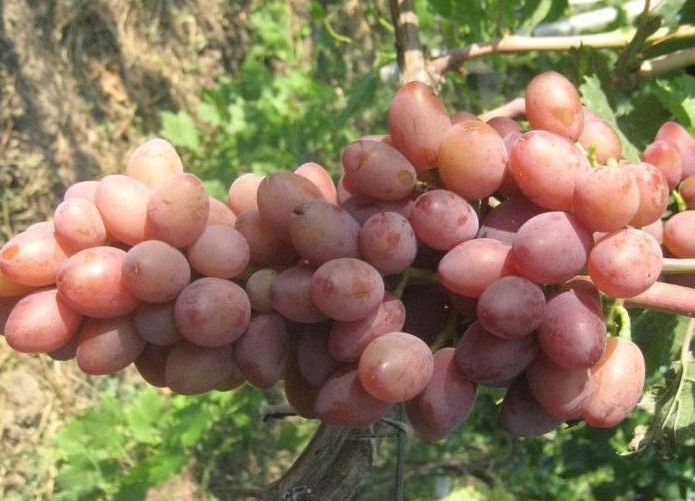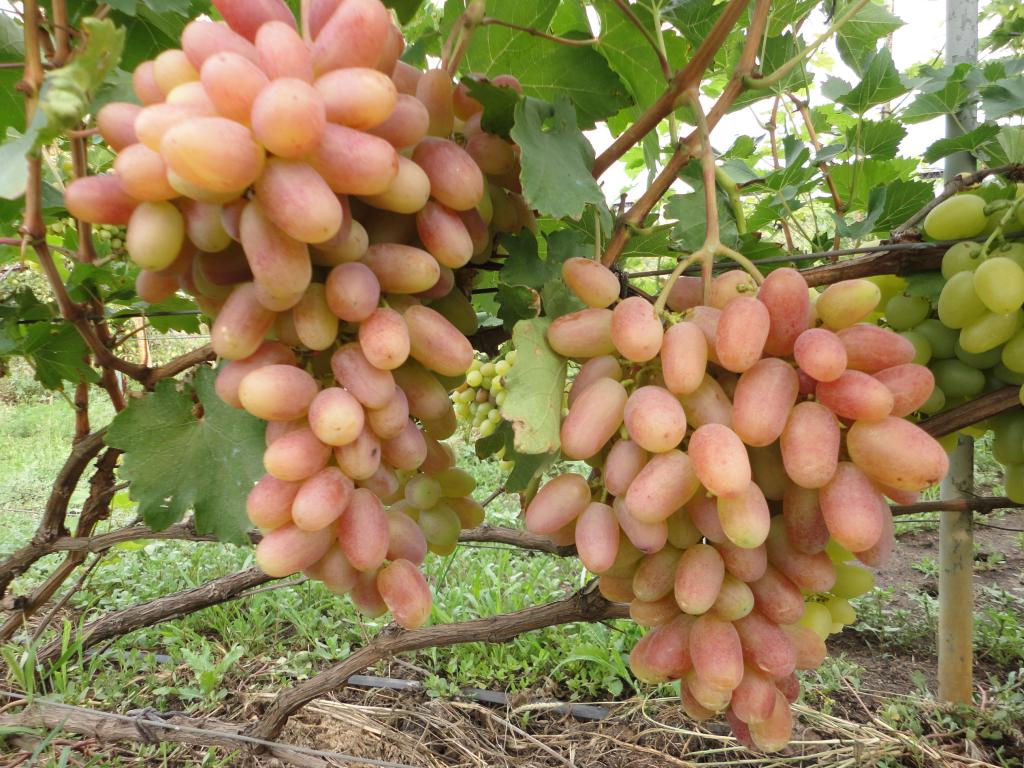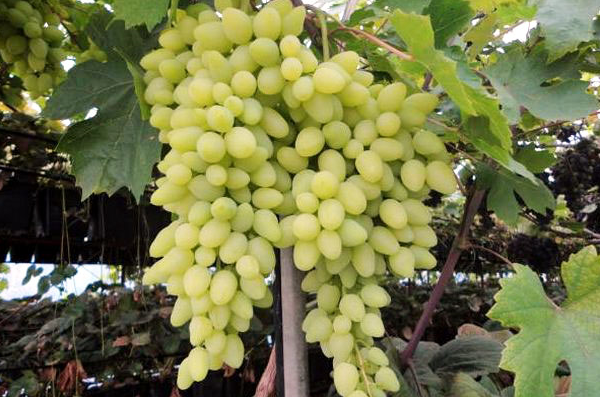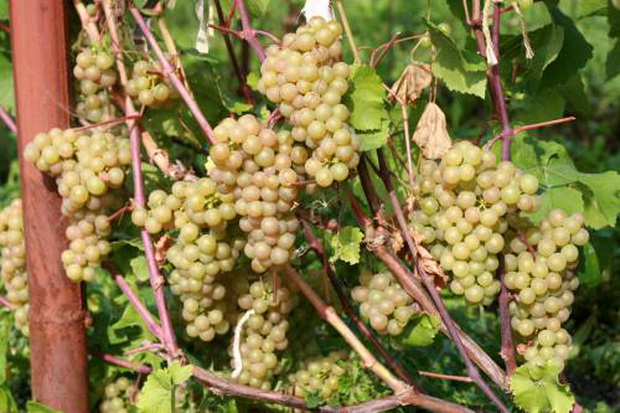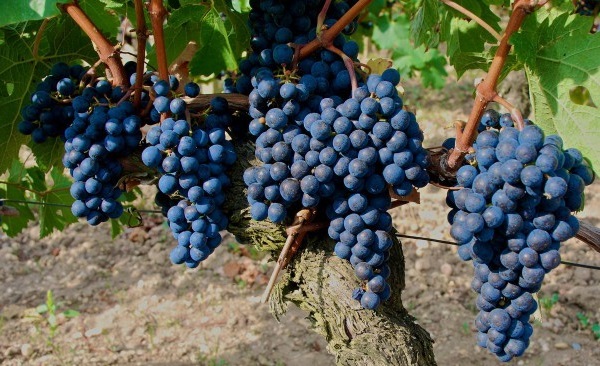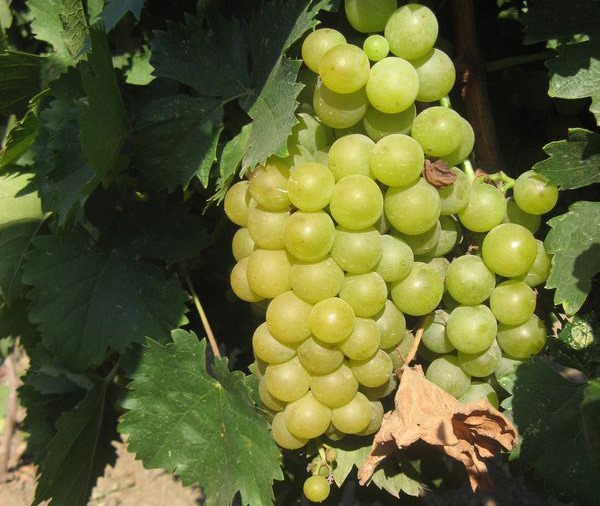Content:
The cultivation of grapes in the middle lane is associated with many difficulties associated primarily with the heat-loving culture. The varieties adapted to cold winters are popular in all regions, and acquaintance with them allows summer residents to replenish their grape collection. Timur grapes adequately represent the family of cold-resistant vines, and acquaintance with the peculiarities of the variety will help summer residents to successfully grow it on their site.
Characteristics and features of the variety
The variety developed by the Novocherkassk Scientific Research Institute of Viticulture got its name “Timur” for a reason - it is translated from the Turkic language as “iron”. From his parents - the Moldavian Muscat White Beauty (Frumoas Albe) and the Kuban table variety Delight, he took the southern sweetness, disease resistance, excellent preservation on the bush before cutting.
The endurance of the vine allows it to be grown in almost all regions of Russia, more or less suitable for viticulture, at least on a private backyard. Perhaps we can say that it will be possible to get a harvest everywhere, except in permafrost regions. At the same time, it is not difficult to cover it for the winter, since Timur is not very tall.
This grape variety belongs to table grapes, it has two types - pink and white. Both varieties accumulate sugar well (17-22%) and have a low acidic index (up to 9 g / l).
The Timur variety has a relatively low vigor with high yields. The bush forms a large number of promising shoots. The average total load on the bush is up to 40 eyes. The color of the vine is brown.
The flowers are bisexual, which guarantees stable yields. Form a moderately dense bunch with an average weight of 400-600 g. Berries are large, up to 3 cm long, thin-skinned. Peeling is extremely rare, only in unstable (with frosts) spring.
White and pink varieties have their own characteristics, which often influence the choice of color of berries for cultivation.
Description of varietal characteristics of grapes White Timur:
- The ripening period is from 100 days in the south to 115 days in the Moscow region and the middle lane.
- It tolerates frosts down to - 25 ° С.
- The efficiency of promising shoots formation is 95%.
- Leaves are medium in size, green, 3-lobed, moderately dissected.
- Clusters are dense to moderately dense, tapered or cylindrical in shape with a tapered tip.
The size of the berries in a bunch is different, from 3 cm at the top to 2 cm at the bottom of the cluster. The color of the berries is from pale green to amber yellow. The skin is thin, without cracking from rain, but for this reason, white Timur is not suitable for long-distance transportation.
Pink Timur grape: variety description
The hybrid is obtained from crossing of Timur white and pink varieties of the Vostorg variety in Zaporozhye. According to the main characteristics, pink grapes repeat their parent, but there are significant differences:
- Ripening period from 115 days in the south to 130 in cool and cold regions;
- frost resistance up to -24 ° С;
- bush height up to 3 m;
- the efficiency of the formation of fruitful shoots is 70%;
- leaves of a dark green color, 5-lobed, with a strong dissection;
- the berries are larger, the average weight of one brush is up to 800 g;
- denser thick skin of the berries, which increases the ability to transport to medium;
- low resistance to spider mite damage.
Features of agricultural technology
To obtain high yields of Timur grapes, the peculiarities of its cultivation are taken into account.
Planting is carried out with two-year-old self-rooted seedlings or grafted onto any healthy mature vine. Grafting makes grapes less picky about growing conditions and soil composition, gives good growth vigor.
Timur grapes are picky about growing conditions. A place for it is selected according to the following criteria:
- Good vineyard lighting. Various buildings and tall trees should not shade the vine. Due to its small growth, it is planted at a distance from the more tall varieties of culture.
- It is optimal for planting to choose a southern or southwestern site near the building. Professional growers strongly recommend protecting the vine as much as possible from wind and drafts that break or break off the inflorescences.
- Timur prefers light, loose soil with a lot of organic matter and good drainage. It is desirable that the place be elevated, or at least level, without depressions, where there is a high probability of infection with fungal diseases.
Planting scheme: the distance between vines in a row is not less than a meter, row spacing - from one and a half meters.
To increase the mass of bunches, the number of eyes during pruning is normalized. With a load of 20-25 eyes on the vine, the mass of one brush reaches 1 kg or more. At the same time, no more than 8 buds are left on each shoot (versus 12 under normal circumstances).
The vine needs regular watering. It is especially important to irrigate the land before flowering, as well as in dry times, followed by loosening and mulching the soil. Top dressing is applied strictly according to the regulations in recommended doses. Delay or deviation from the norm affects the quality of the crop.
Advantages and disadvantages
Timur got his indisputable advantages from his parents. They primarily include:
- self-pollination;
- no special requirements for the stock;
- fruiting begins in the second year;
- resistance to fungal and putrefactive diseases;
- frost resistance;
- long (before frost) preservation of berries on the vine.
The disadvantages are:
- weak growth force, due to which the bush gives a small number of shoots and requires normalization;
- high exactingness to the place of growth, soil and care.
Summer residents of the middle lane are happy to cultivate it on their plots, since the qualities of the grape bunch of the variety are many times higher than the disadvantages of the plant.

